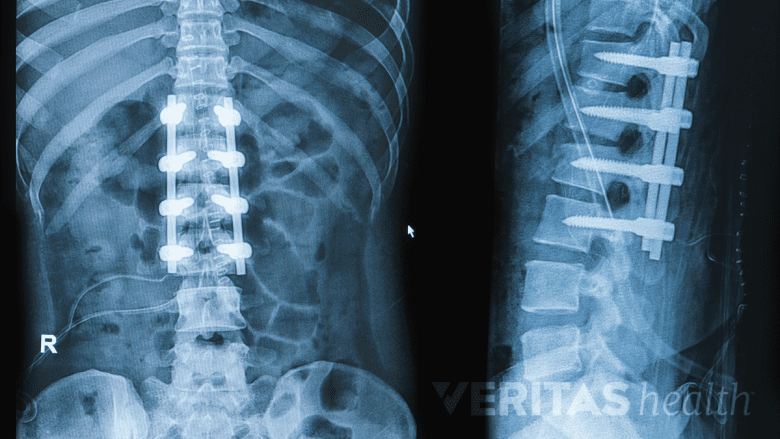After a lumbar spinal fusion has had 3 months of healing, it is time for physical activity and exercise to become a central component of the recovery process. Progress in daily activities is usually readily apparent at this stage, and many patients are already working with a physical therapist.
In the earlier stages of the recovery process, vigorous exercise is not advised. However, due to the trauma of surgery, the patient’s trunk muscles, and overall condition become somewhat weakened. A loss of muscle tone and reduced range of motion leading to stiffness are common, which needs to be addressed with exercise and physical therapy.
In This Article:
- Postoperative Care for Spinal Fusion Surgery
- Hospital Care After Spinal Fusion Surgery (2 to 4 Days)
- Spinal Fusion Surgery Recovery: After Discharge (First Few Days)
- Spinal Fusion Surgery Recovery: 1 to 4 Weeks After
- Spinal Fusion Surgery Recovery: 1 to 3 Months After
- Spinal Fusion Surgery Recovery: 3 Months and After
Exercise Helps Fusion Heal
Many patients are understandably worried that they might damage the fusion through exercise, but activity at this point promotes further healing. Once the fusion has been found to be progressing as expected, it is no longer as fragile. Instead of endangering the fusion, exercising the area after 3 months helps it become stronger. Excess bending, lifting, and twisting are still to be avoided in most cases, but graduated exercise, as tolerated, has major benefits.
See Guide to Physical Therapy After Spinal Fusion
A controlled, progressive exercise program is typically started somewhere between 6 weeks and 3 months after surgery. A physical therapist may help guide the start of this exercise program. However, the patient eventually transitions to a long-term, self-directed exercise program that can be continued at home. More specialized physical therapy (called work hardening or work conditioning programs) may be done in situations requiring a return to work involving physical labor. Even people wanting to return to strenuous occupations or recreation can typically do so by 6 months after surgery.
When Bending, Lifting, and Twisting Are Allowed
Fusion confirmed on an x-ray allows a full return to active life, including bending, lifting, and twisting.
Once the surgeon confirms on x-ray imaging that the fusion has completely solidified into one bone, a full return to an active lifestyle—including bending, lifting, and twisting—is permitted. This approval typically occurs about 6 months after the surgery, but sometimes it may take closer to 12 months.
Many activities that were performed prior to the surgery can be resumed after the fusion has reached full strength, but there may be some exceptions. For example, the patient may want to discuss high-impact activities with the surgeon, such as full-contact sports.
Despite returning to all activities, it is advised to maintain many of the good habits that were required during the recovery process, such as performing exercises to stretch and strengthen the back, aerobic exercise and bending at the knees while lifting heavy items, and not smoking.
Complete Recovery at 1 to 2 Years
Complete recovery from spinal fusion surgery usually takes up to 8 months, with the bone continuing to evolve for 12 to 18 months. In some situations where the nerves had significant injury prior to surgery, it may take up to 1 to 2 years to see how well the nerves will heal.






